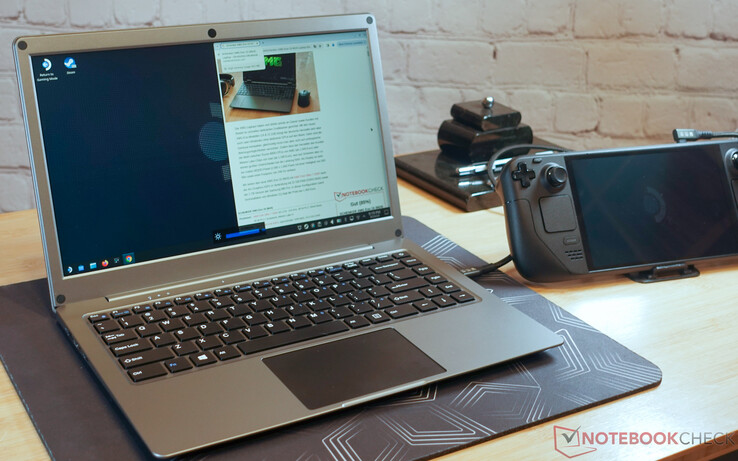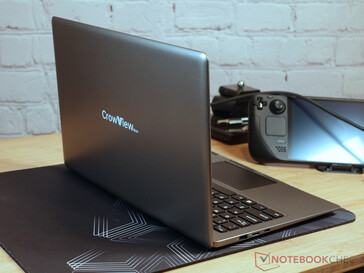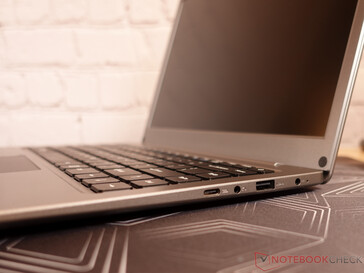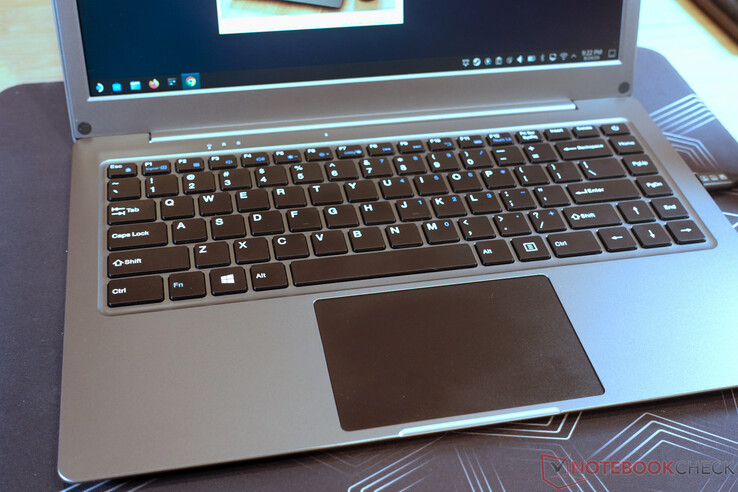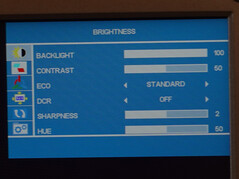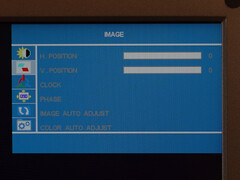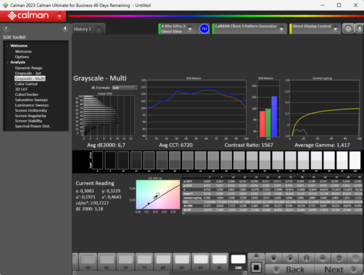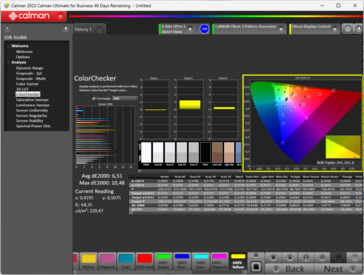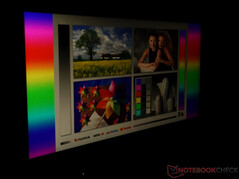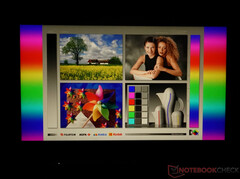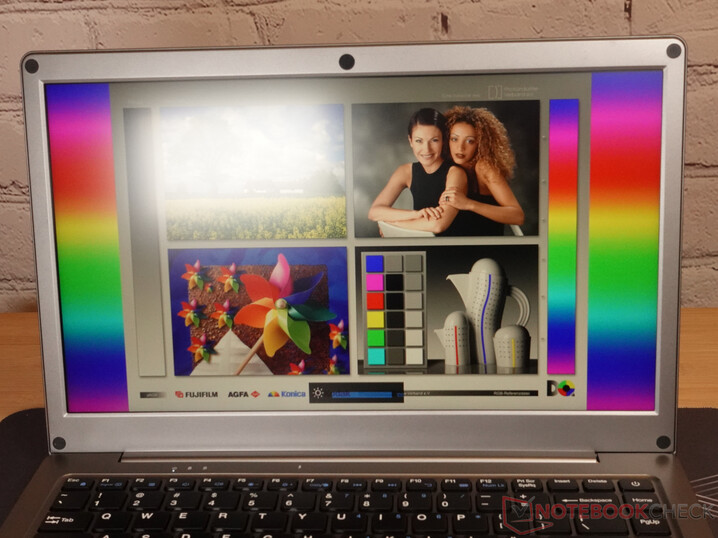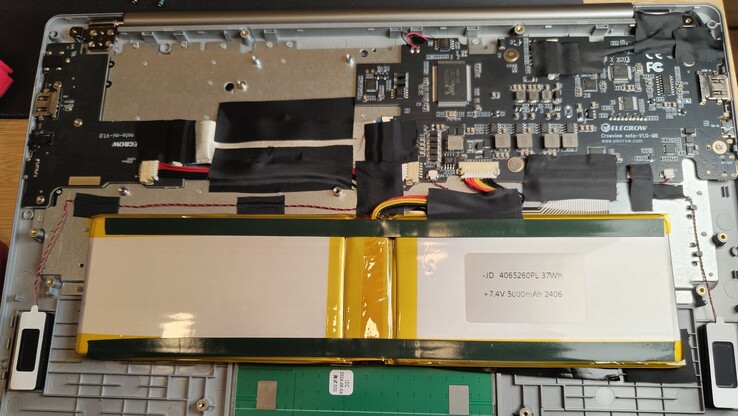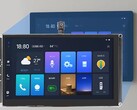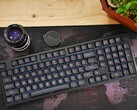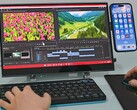Elecrow CrowView Note portable monitor with a keyboard review - A laptop without a processor
Elecrow already has quite a few portable monitors on offer but otherwise, the manufacturer tends to focus on the DIY market with single-board computers such as Raspberry Pi and developer boards such as Arduino and ESP32, as well as product development services. Elecrow offers contract manufacturing for circuit boards and 3D prints.
The CrowView Note aims to be an affordable all-in-one solution for anyone who wants to use a handheld, smartphone or single-board computer productively on the move. The device is equipped with a generous battery, a good screen and an excellent keyboard. The 14-inch laptop weighs just over one kilogram without a processor.
A Kickstarter campaign is currently running for the device. It is available for upwards of US$129.90.
| CrowView Note | Portable monitor with keyboard and touchpad |
|---|---|
| Display | 14 inches 16:9; 1920 x 1080 pixels; IPS LED; 60 Hz, FreeSync, reflective: no |
| Connections | Left: USB-A 2.0 (can be used as host or client); MiniHDMI (input); USB Type-C port without data connection 5V 5A power supply Right: USB-C port (DisplayPort and Power Delivery 5V 5A); 3.5-mm headset jack; USB Type-A (2.0); 3.5-mm hollow socket for power supply (12 V) |
| Size and weight | 33.4 × 22.2 × 1.75 cm 1,135 g |
| Speakers | Stereo |
| Microphone | Mono |
| Keyboard | Chiclet, keyboard backlighting: no |
| Manufacturer website | Elecrow Kickstarter |
Case and connectivity
At first glance, the CrowView Note looks like a normal, perhaps somewhat inexpensive laptop. Only when you switch on the device does it become clear that there is no computing hardware installed inside. Its case is made of painted plastic all around. Its silver color looks nice and doesn't stand out a lot. As far as the plastic case's build quality is concerned, we found no defects whatsoever. However, we did notice that the paint on our test device is quite susceptible to scratches. Still, this model is still part of the last pre-series production. You can probably expect better paint quality from series hardware. Ultimately, the device feels more valuable than its low price would suggest.
Due to its wide display bezels, the CrowView Note's dimensions are slightly larger than comparable 14-inch laptops, but at 17.5 mm, the device is quite flat and weighing in at 1,153 g, it's also pretty lightweight.
Connectivity
The ports for connecting single-board computers are located on the left-hand side of the screen. Here, you can find a mini-HDMI input, a USB-C port and a USB Type-A connector. The USB-C port doesn't provide a data connection and supplies 5V to the SBCs. The USB-A port can act as a host or client connection. When a Raspberry Pi or similar is connected, the socket is used to connect the keyboard, clickpad and right-side ports to the computer. On the right side of the laptop, there's a USB Type-C port that can be used to connect all devices that support DisplayPort via USB-C. We tested laptops, smartphones and handhelds. Smartphones and the Steam Deck were supplied with power from the dock during our test. As the socket only supplies 5V, handhelds and laptops cannot be powered by the CrowView Note. Additional devices can be connected to both USB-A ports via the USB-C connection. However, only USB 2.0 has been installed.
Our test device's built-in battery can only be charged using the included 12 V power adapter. Unfortunately, this is one of the worst issues we have with this device, as it considerably limits the laptop's portability. When on the move, you either have to rely on the generous built-in battery or carry the proprietary mains adapter with you. On the other hand, you could also do yourself a favor by using a corresponding USB-C adapter plug (around US$10 on Amazon) if you have a suitable USB-C power supply unit with you.
Touchpad and keyboard
The CrowView Note is equipped with an excellent keyboard but unfortunately, it doesn't feature any backlighting. At about 1.5 mm, its key travel is comparatively high for such a slim laptop. The keys' pressure point and haptics are comfortable.
You can change the picture settings, volume and media playback via the function keys, as well as check the device's battery. It additionally features a virtual number pad.
As far as the touchpad is concerned, we found that it works slightly better when using Windows as opposed to Linux. When connected to Linux computers, the palm recognition doesn't work too well. With Windows, we didn't notice any functional differences compared to the touchpads of other modern laptops. The clickpad's surface is smooth, clicking feels pleasant, and gestures with up to five fingers are recognized.
Display
The matte panel inside the CrowView Note features a resolution of 1,920 × 1,080 pixels. The display's brightness is up to 300 cd/m, depending on the picture settings. Speaking of picture settings, the CrowView Note offers a wide range of customization options. The display has an over-drive mode, for example, with which it achieves around 300 cd/m². However, its color accuracy is then reduced. In normal mode, it manages 250 cd/m². In this setting, we measured a high color accuracy by default.
Our measurements confirmed that the CrowView Note features good color reproduction straight out of the box as long as the Over Drive is switched off. In normal picture mode, the sRGB white point was hit at the settings shown above. (RGB 51;50;48). Its sRGB color space coverage is around 100 %, and Calman ColorChecker determined an average color deviation of only deltaE2000 0.72. This is a value that seems suitable for professional work on the device.
Even though the panel inside the CrowView Note is an IPS panel, its viewing-angle stability is rather poor. Although its color depiction remains constant from every angle, its brightness plummets. It seems the device is only partially suited for outdoor use. At 250 cd/m², reflections from strong light sources may well influence the screen's legibility.
Speakers
The CrowView Note has built-in stereo speakers that can get quite loud, reaching 84 dB(A). Unfortunately, the device clearly lacks volume in the lows, while the mids and highs are reproduced powerfully. This makes the portable screen rather unsuitable for movies or music. Voice calls and video conferences seem more feasible, provided an external webcam is used.
Battery life
During our test, the CrowView Note's battery lasted for around 12 hours at full screen brightness when operating a Raspberry Pi 3. As long as connected devices do not draw on the Note's built-in battery, even longer runtimes are possible. The battery features a generous capacity of 37 Wh.
Pros
+ good display inside a lightweight case
+ comfortable keyboard
+ long-lasting battery
Cons
– limited power supply options for both the CrowView Note and other devices
– no Webcam
– no keyboard backlighting
– low display brightness
Verdict
The CrowView Note is a practical device with many conceivable uses. In addition to single-board computers such as a Raspberry Pi or a Jetson Nano, you can connect a variety of other devices to the screen which features a keyboard. The display can also be used on its own, for example to check images from a camera. We tested the CrowView Note with various devices. Handhelds such as the Steam Deck or the Ayaneo Air as well as Samsung smartphones with Dex are massively extended in their functionality.
The CrowView Note extends the functionality of gaming handhelds, smartphones and single-board computers. It features a good screen and an excellent keyboard.
The device's build quality and range of functions are fine considering its price point. Apart from its relatively low brightness, we don't really see any major points of criticism. Its built-in speakers are certainly quite weak, but the CrowView Note isn't necessarily intended as a multimedia laptop. We quite often see similar speakers on office laptops. In terms of connectivity, there is some room for improvement but compared to other solutions such as the Mirabook or Uperfect Lapdocs, the much cheaper CrowView Note looks equally good.
Price and availability
The CrowView Note is exclusively available via a Kickstarter campaign until September 14. Various early-bird deals are available from US$129.90. The usual risks of supporting projects on Kickstarter apply. Devices ordered via Kickstarter will be shipped from October. After that, the CrowView Note will also be available via Elecrow's online store.
Transparency
The selection of devices to be reviewed is made by our editorial team. The test sample was given to the author by the manufacturer free of charge for the purposes of review. There was no third-party influence on this review, nor did the manufacturer receive a copy of this review before publication. There was no obligation to publish this review. As an independent media company, Notebookcheck is not subjected to the authority of manufacturers, retailers or publishers.
This is how Notebookcheck is testing
Every year, Notebookcheck independently reviews hundreds of laptops and smartphones using standardized procedures to ensure that all results are comparable. We have continuously developed our test methods for around 20 years and set industry standards in the process. In our test labs, high-quality measuring equipment is utilized by experienced technicians and editors. These tests involve a multi-stage validation process. Our complex rating system is based on hundreds of well-founded measurements and benchmarks, which maintains objectivity. Further information on our test methods can be found here.




